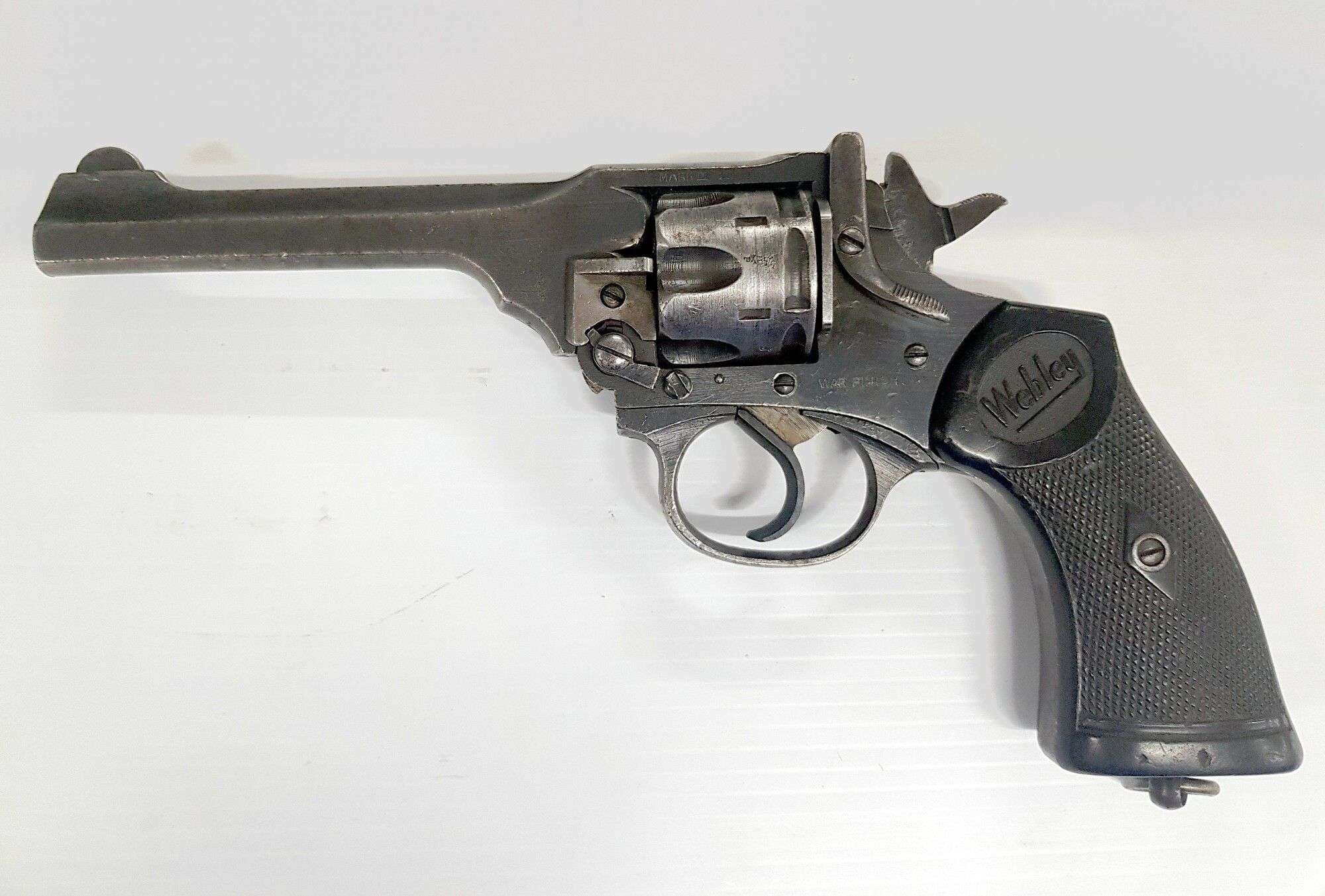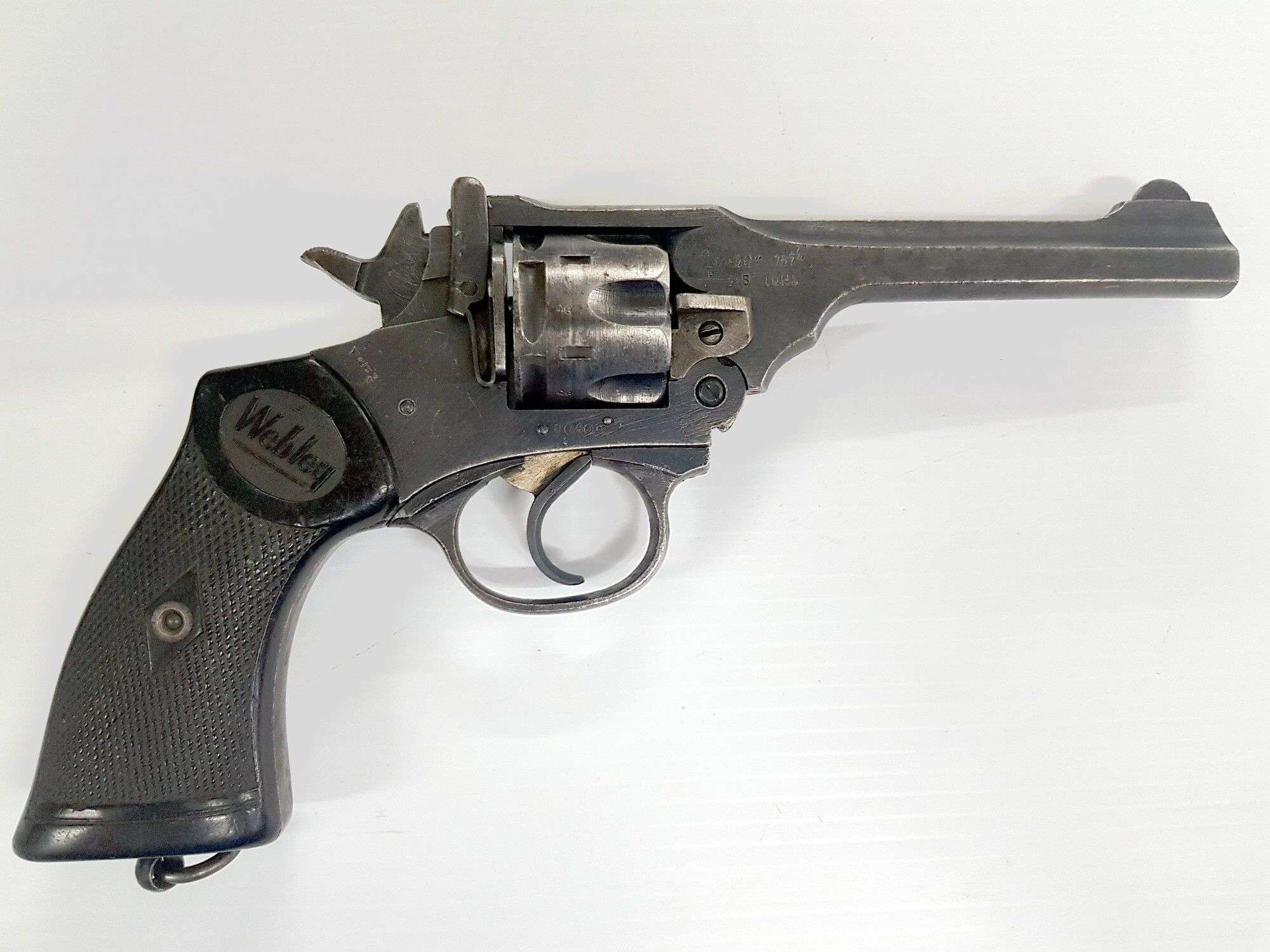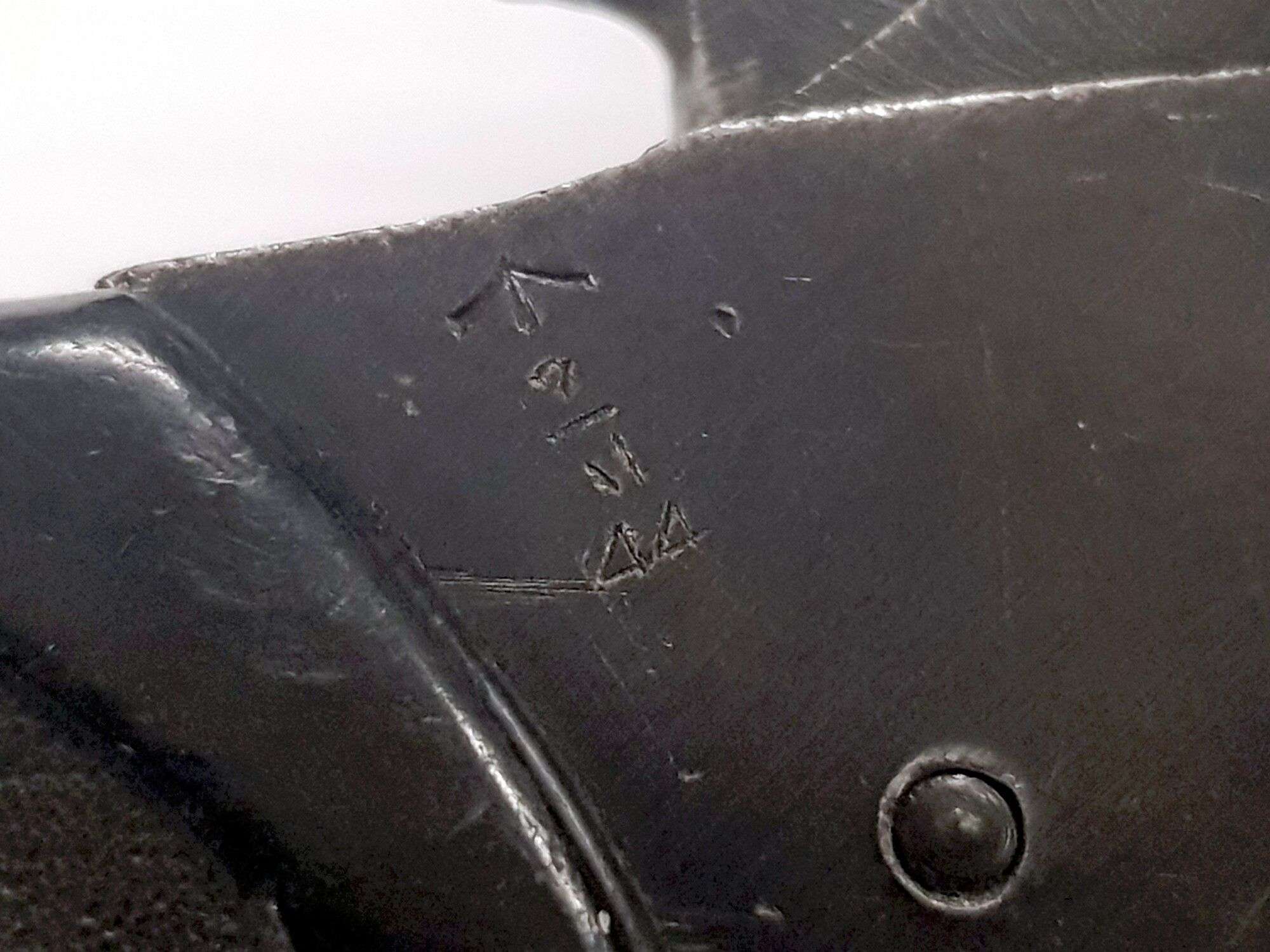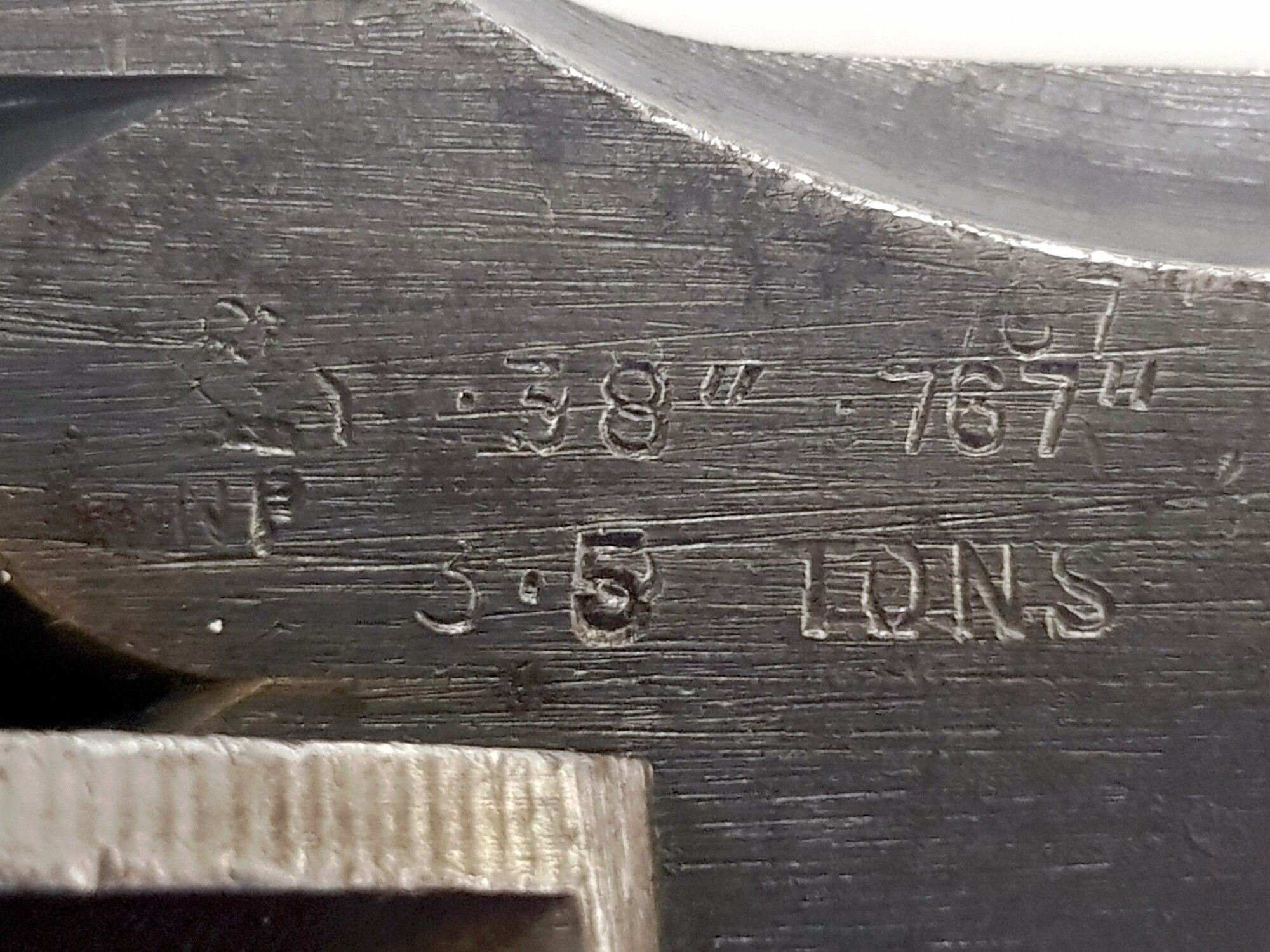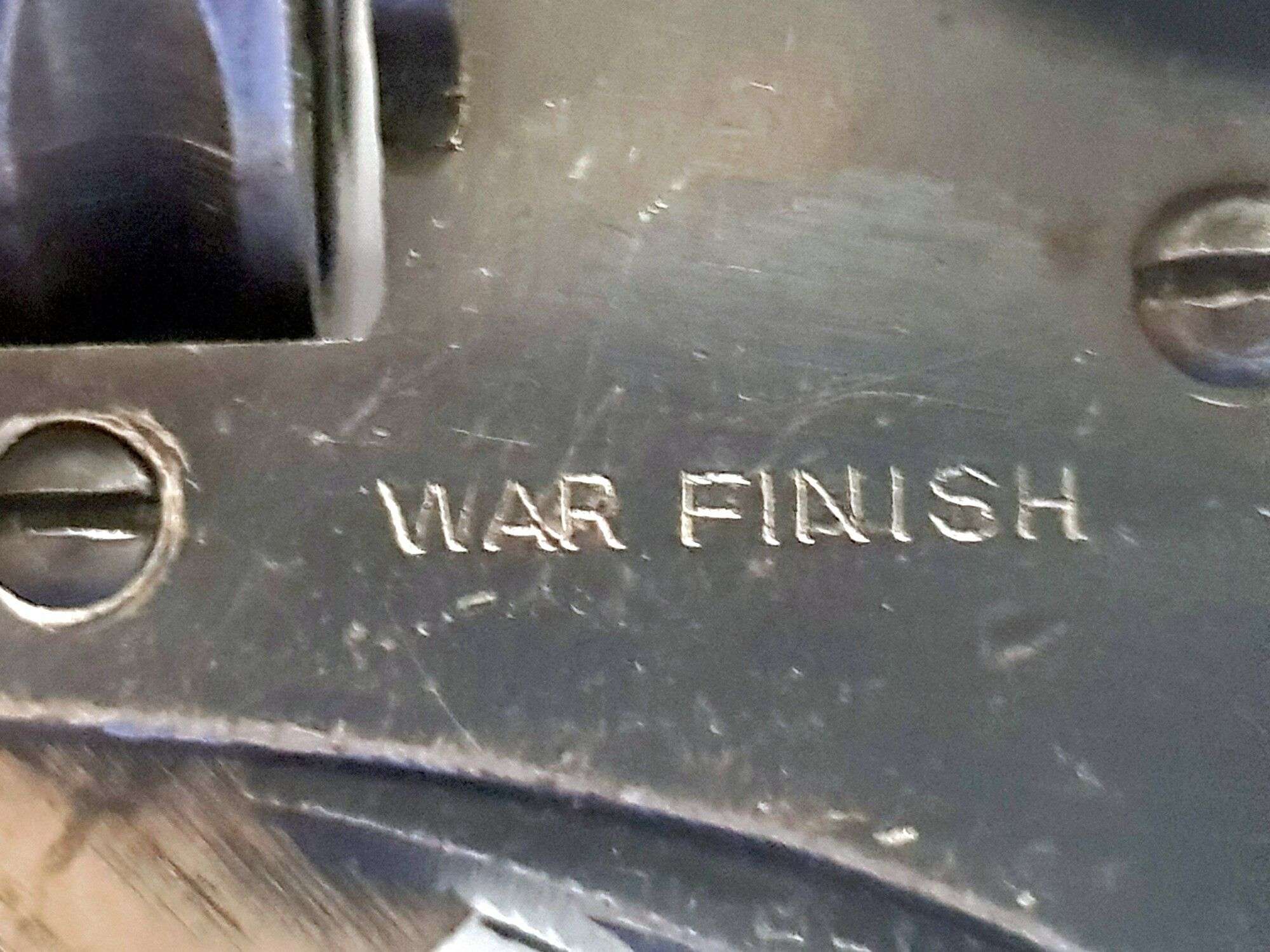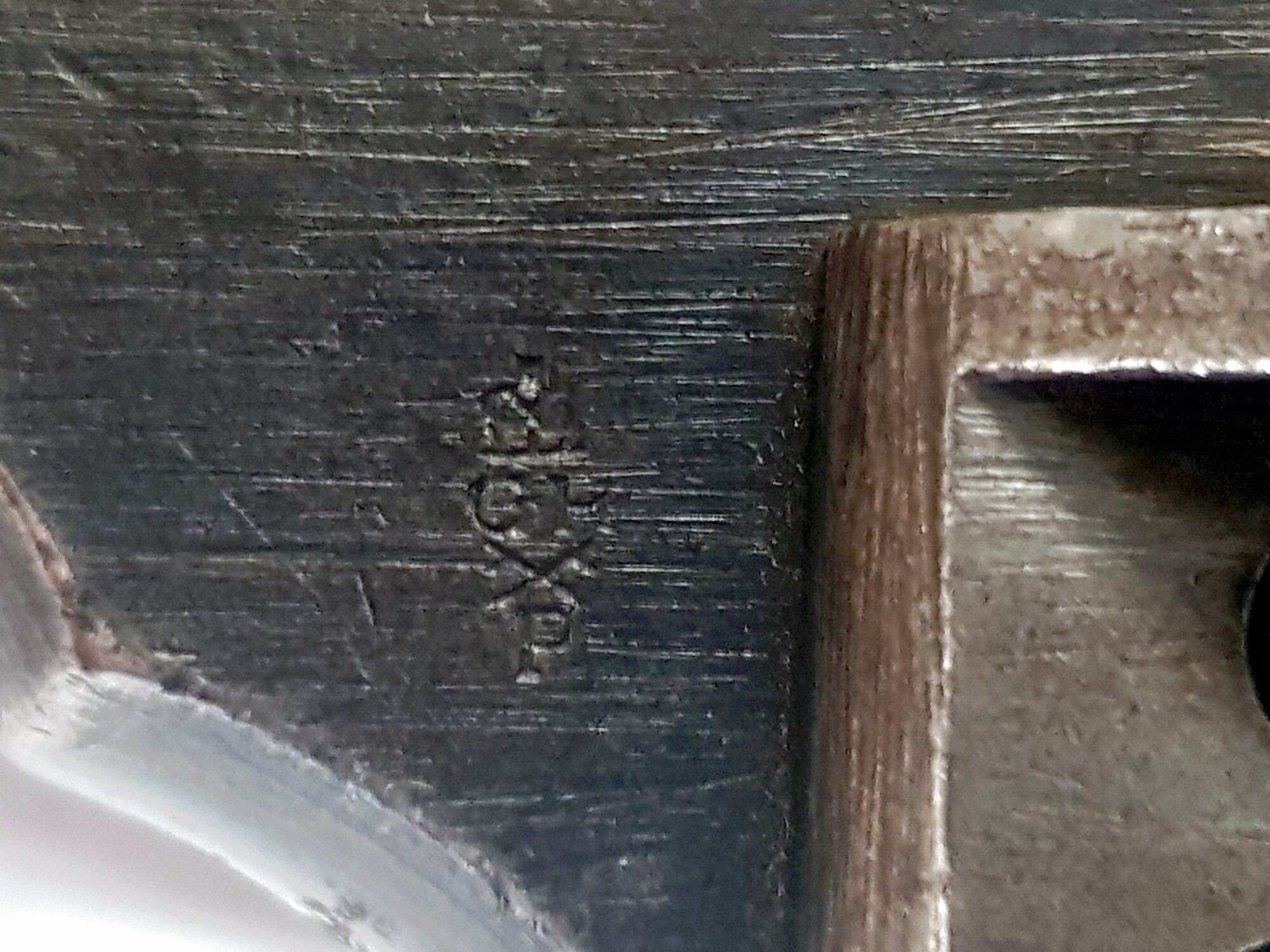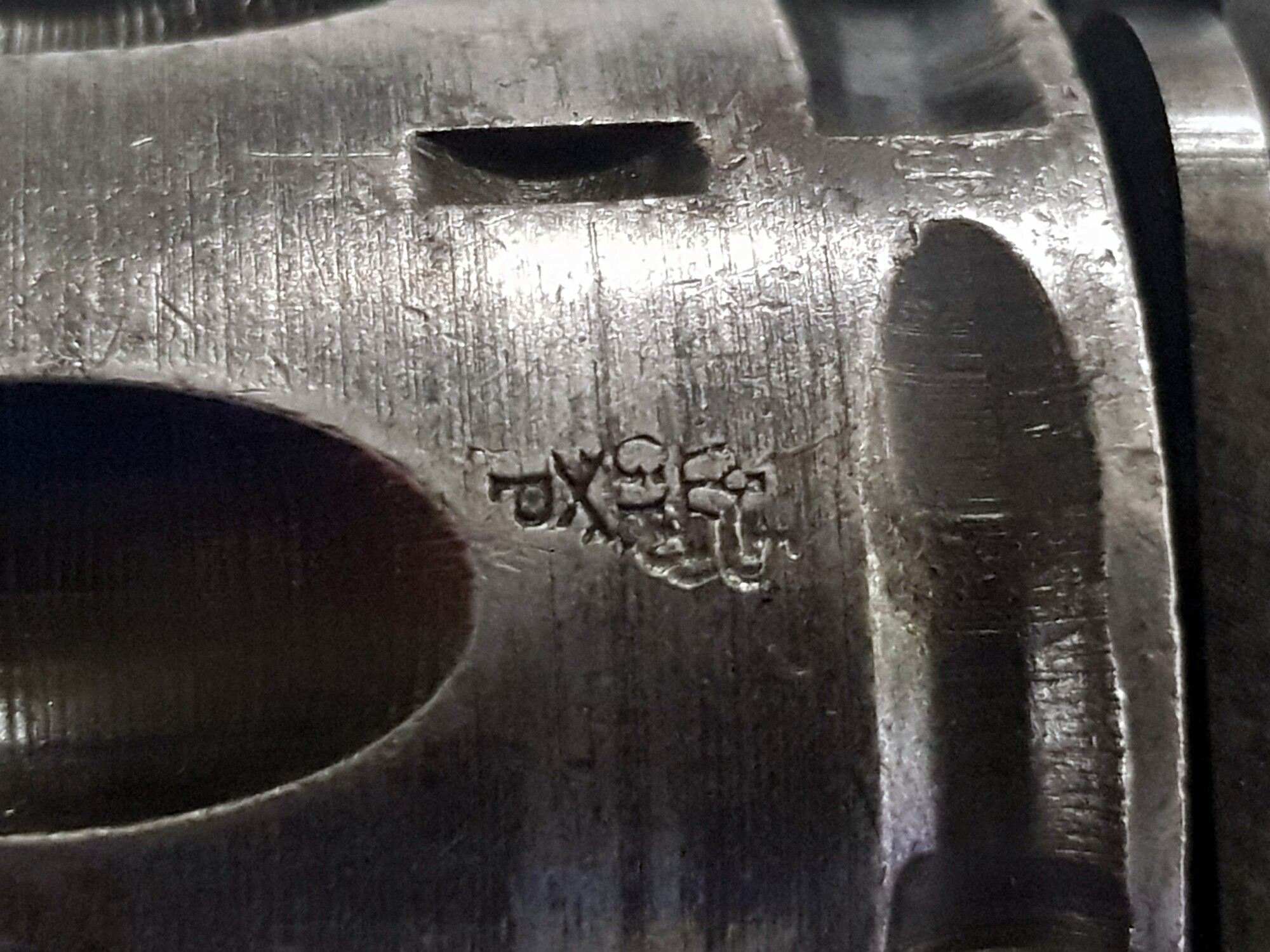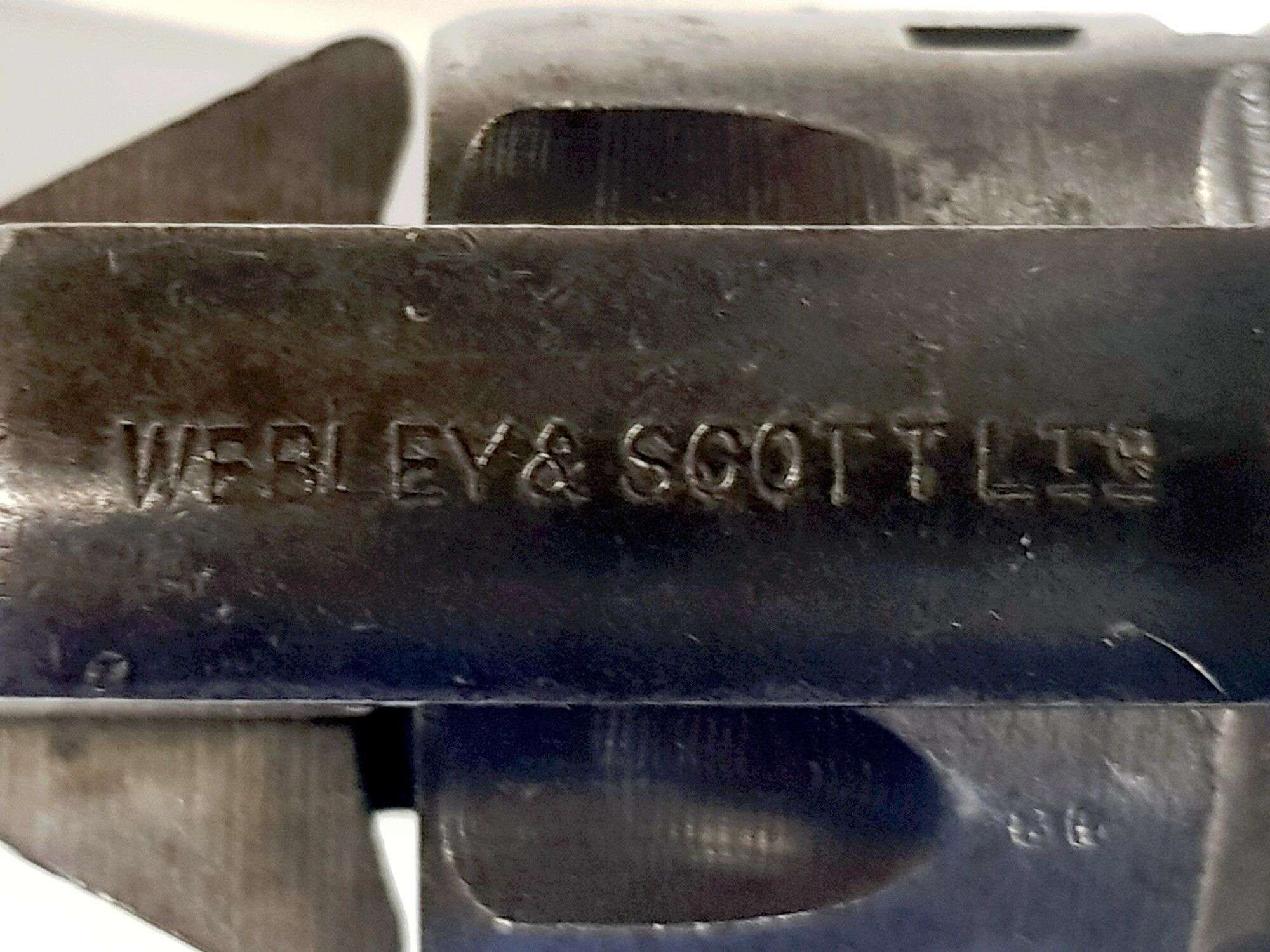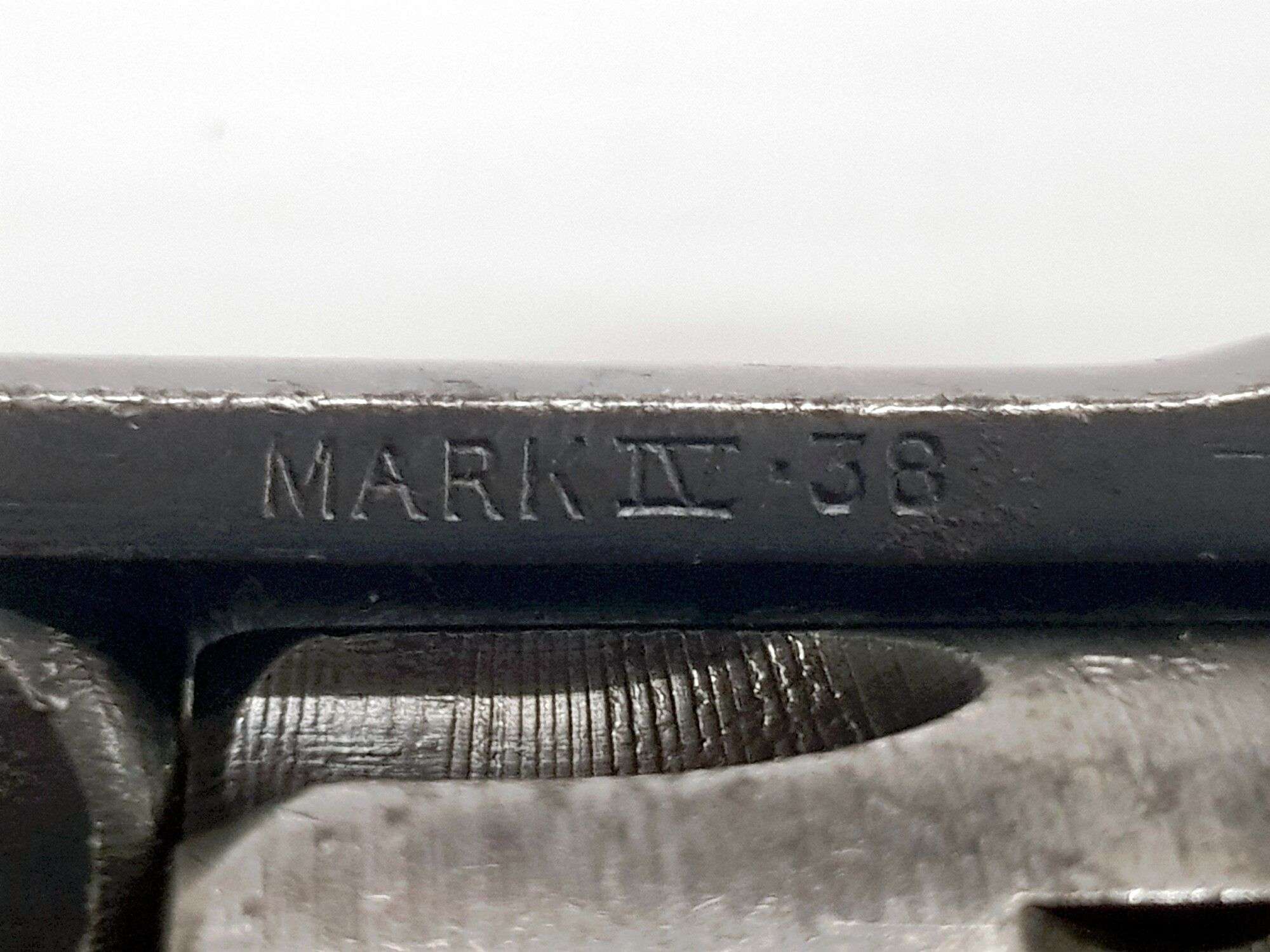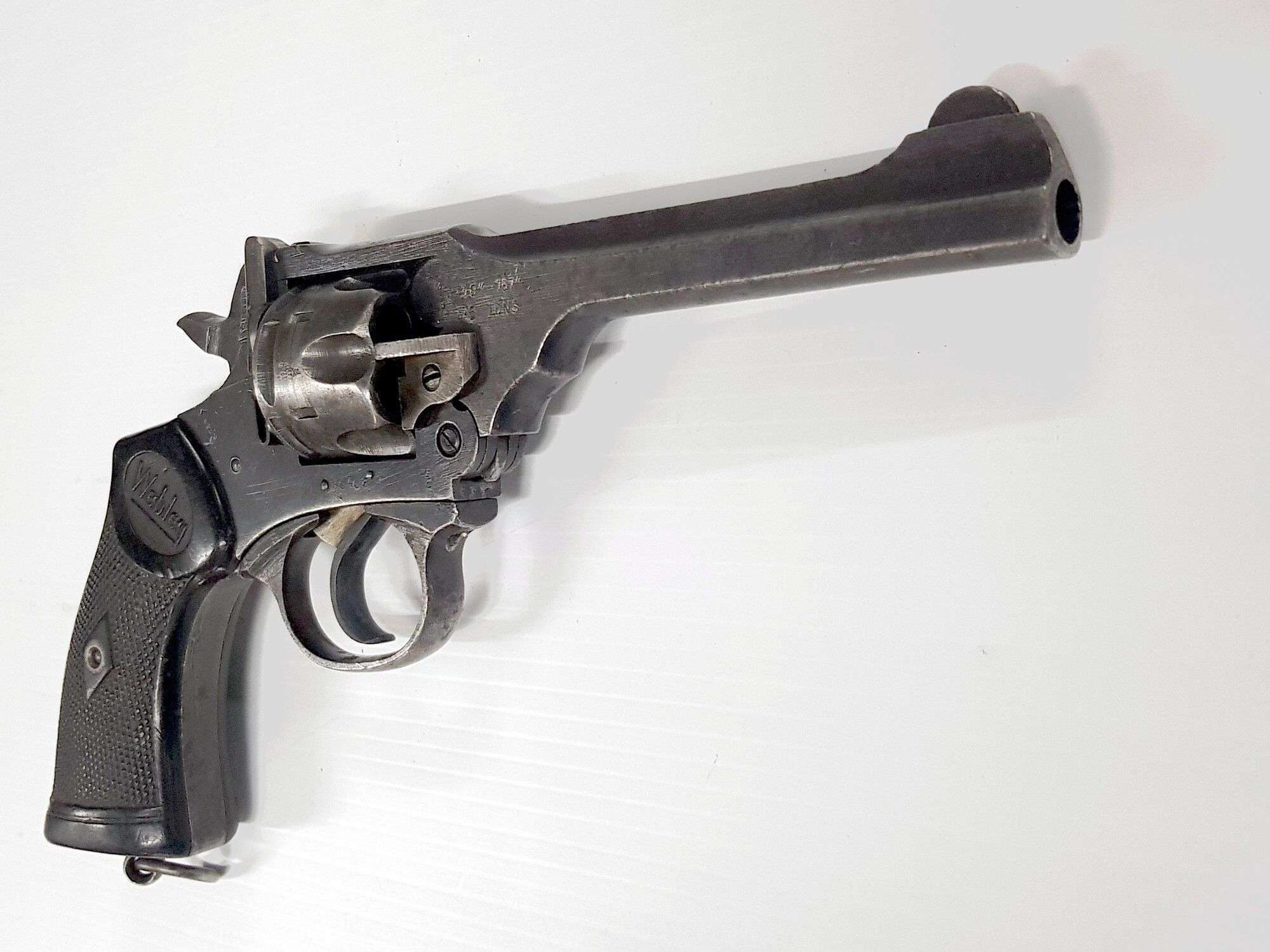Description
The Webley is famous for being an iconic & easily recognised top-break revolver. Breaking the revolver operates the extractor, which removes cartridges from the cylinder. The Mk VI, introduced in 1915 during WW1, is perhaps the best-known model. Firing large .455 Webley cartridges, Webley service revolvers are among the most powerful top-break revolvers ever produced.
At the end of the World War 1, the British military decided that the .455 calibre gun & cartridge was too large for modern military use. After numerous tests & extensive trials it was determined that a pistol in .38 calibre firing a 200-grain (13 g) bullet would be just as effective as the .455 for stopping an enemy.
Webley & Scott immediately tendered the .38/200 calibre Webley Mk IV revolver, which as well as being nearly identical in appearance to the .455 calibre Mk VI revolver (albeit scaled down for the smaller cartridge), was based on their .38 calibre Webley Mk III pistol which was designed for the police & civilian markets.
The British Government took the design to the Royal Small Arms Factory (RSAF) at Enfield, which came up with a revolver that was externally almost identical, but was internally different enough that no parts from the Webley could be used in the Enfield & vice versa.
The Enfield-designed pistol was quickly accepted under the designation Pistol, Revolver, No. 2 Mk I, & was adopted in 1932, followed by the Mk I* (spurless hammer, double action only) & finally the Mk I** (simplified for wartime production) in 1942. Webley & Scott sued the British Government over the incident, claiming £2250 as “costs involved in the research and design” of the revolver.
This was contested by RSAF Enfield, which quite firmly stated that the Enfield No. 2 Mk I was designed by Captain Boys (the Assistant Superintendent of Design, later of Boys Anti-Tank Rifle fame) with assistance from Webley & Scott & not the other way around. Accordingly, their claim was denied but by way of compensation, the Royal Commission on Awards to Inventors eventually awarded Webley & Scott £1250 for their work.
As it turned out, RSAF Enfield proved unable to manufacture enough No. 2 revolvers to meet the military’s wartime demands & as a result the Webley Mk IV was also widely used within the British Army in World War 2.
Due to the high demand, war production Webley revolvers were manufactured with less focus on finish which Webley was not comfortable with, so in order to protect their reputation for quality they marked these as ‘War Finish’. You can quite easily see the lack of refinement on these with the milling marks quite obvious & a distinct lack of bluing.
These are now quite difficult to find in original condition as many underwent the FTR (factory thorough refurbishment) process whereby they were re-coated & all parts were checked & replaced if necessary. Being a relatively simple gun, most were just refinished without thought for future collectors. This is an opportunity to add a genuine wartime Webley in excellent condition to your collection.
Please view all of the photos carefully as they form the main description & override all others.
Sold on consignment on behalf of a collector.


